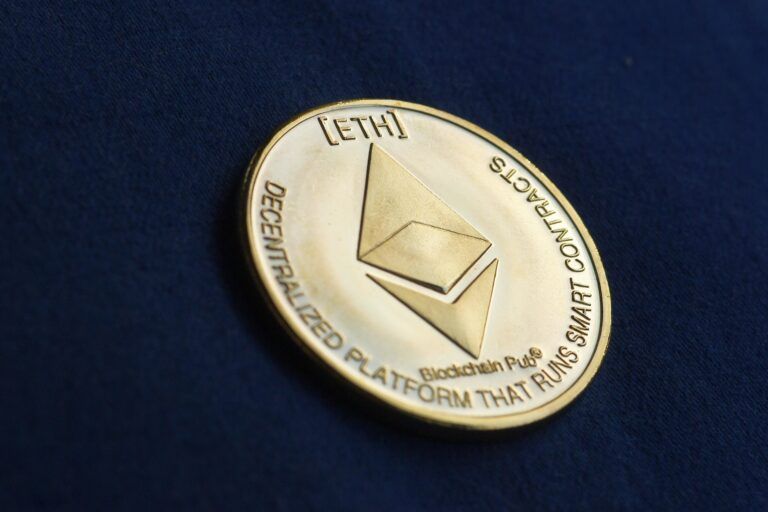VanEck’s comprehensive blog post, written by Patrick Bush and Matthew Sigel and published on April 3, 2024, takes a deep dive into the world of Ethereum Layer-2 (L2) solutions. The post provides an in-depth analysis of the role, types, revenue models, cost structures, and competitive differentiation of these networks. Additionally, VanEck presents its valuation prediction for Ethereum L2s by 2030, offering a glimpse into the potential future of these scaling solutions.
According to VanEck, the emergence of Layer-2 solutions is a direct response to Ethereum’s scalability challenges. As the demand for transactions on the Ethereum network continues to grow, L2s have become a crucial component in increasing the overall capacity for processing transactions. By handling transactions off-chain and settling them back on the main chain, L2s can significantly enhance Ethereum’s scalability without compromising its security or decentralization.
VanEck’s blog post explains the two main types of L2s: optimistic roll-ups (ORUs) and zero-knowledge roll-ups (ZKUs). Both types of roll-ups settle their ledger balances on Ethereum by sending compressed versions called “Merkle Roots.” However, there is a key difference between the two. ORUs post condensed transaction data alongside the Merkle Roots, allowing for verification and traceability. In contrast, ZKUs only send zero-knowledge proofs of the transaction data, ensuring the validity of the transactions without revealing the actual data.
The revenue models of L2s, as detailed by VanEck, closely resemble those of L1 blockchains. L2s generate income when users create activity on their chains and pay fees in ETH. VanEck highlights the various methods through which L2s can monetize transaction ordering, such as priority fees, first-in-first-out (FIFO) sequencing, and auctioning block ordering rights. These methods allow L2s to capture value from the demand for transaction processing and prioritization.
VanEck’s analysis also delves into the on-chain and off-chain cost structures of L2s. On-chain costs primarily consist of Ethereum gas fees incurred when posting transaction data, settlements, and proofs to the main chain. The blog post highlights the differences in cost structures between ORUs and ZKUs, with ORUs facing higher on-chain data costs and ZKUs incurring expenses related to proof generation and verification. VanEck also discusses the impact of EIP-4844 and the introduction of “Blob Space,” which aims to reduce data costs for L2s by providing a dedicated transaction environment for L2 data postings.
In evaluating the competitive differentiation of L2s, VanEck examines five key areas: transaction pricing, developer experience, user experience, trust assumptions, and ecosystem size. The blog post compares the performance and characteristics of various L2 solutions in each of these areas, providing valuable insights into their strengths and weaknesses.
Transaction pricing, as analyzed by VanEck, is influenced by factors such as data compression, data posting efficiency, L2 scale, proving costs (for ZKUs), and the margin each L2 takes. The post highlights the differences in pricing economics between ZKUs and ORUs, with ZKUs having higher fixed costs due to proof generation and verification, while ORUs face variable costs associated with posting transaction data to Ethereum.
Developer experience is another crucial aspect of L2 competitiveness, as discussed by VanEck. The post emphasizes the importance of EVM compatibility, which allows smart contract code, tooling, and developer libraries to be easily ported from Ethereum to L2s. However, VanEck also notes that some L2s, such as Starknet and Movement Labs, are exploring alternative programming languages like Cairo and Move, which may appeal to developers seeking more efficient or specialized environments.
User experience, as evaluated by VanEck, encompasses factors such as asset onboarding, withdrawal processes, and transaction finality. The blog post highlights the differences in finality between ORUs and ZKUs, with ORUs requiring a fraud challenge period before transactions become irreversible, while ZKUs achieve finality once a state root and its proof are posted to Ethereum. VanEck also discusses the importance of familiar tools and interfaces, such as wallets and blockchain explorers, in enhancing user comfort and adoption.
Trust assumptions, as analyzed by VanEck, vary significantly among L2s. The post outlines the potential risks associated with sequencer failure or takeover, as most L2s currently rely on a single, centrally operated sequencer. VanEck discusses the various safety measures and guard rails implemented by different L2s to mitigate these risks, such as allowing users to remove assets or submit transactions directly to the L1 under certain conditions. The post also highlights the efforts of some L2s, like Metis, to decentralize their sequencers and introduce multiple sequencers with economic incentives for honest behavior.
Ecosystem size, as evaluated by VanEck, is a critical factor in determining the value and potential of an L2. The blog post emphasizes that the usefulness and diversity of services and digital commodities available on an L2 directly contribute to its value through user transactions, demand for its native token, and network effects. VanEck notes that while metrics like total value locked (TVL) and transaction volume are commonly used to measure blockchain activity, they can be susceptible to manipulation, particularly in the context of airdrop farming.
Finally, VanEck presents its base case valuation prediction for Ethereum L2s by 2030. The firm estimates that the market capitalization of Ethereum L2s could reach an impressive $1 trillion by 2030. This prediction is based on VanEck’s thorough analysis of the L2 landscape, taking into account factors such as adoption rates, technological advancements, and the overall growth of the Ethereum ecosystem.
Featured Image via Pixabay
Read the full article here

